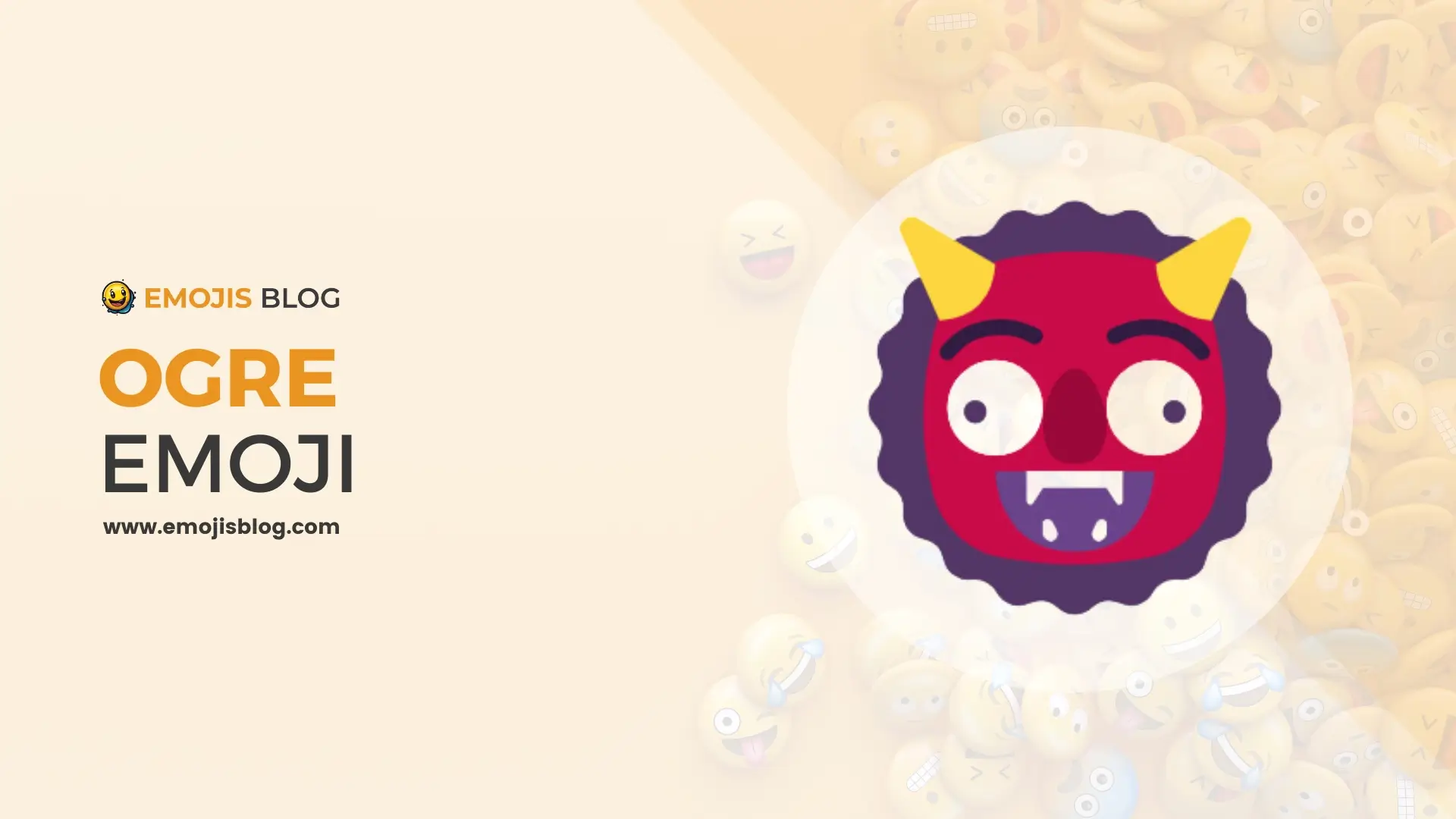What Does The Ogre Emoji 👹 Mean?
👹
Ogre Emoji 👹 Meaning
The ogre emoji 👹 depicts a mythical creature often associated with fear and malevolence in folklore and fantasy literature. With its exaggerated facial features, including large teeth and horns, the emoji symbolizes intimidation and monstrosity. It is commonly used in digital communication to convey a sense of threat, playfulness, or dissatisfaction, adding a touch of fantasy or spookiness to conversations, especially in contexts related to Halloween, horror, or gaming.
Technical Information
| Property | Value |
|---|---|
| Unicode | U+1F479 |
| Name | Ogre |
| Category | Smileys & Emotion |
| Subcategory | Fantasy & Fairy Tale |
| Keywords | monster, mythical, creature, fantasy, folklore, fairy tale |
| Codepoints | 1F479 |
| Version | Emoji 1.0 (2015) |
| Platform | Cross-platform |
| Design | Cartoonish representation of an ogre with exaggerated facial features such as large teeth, horns, and a menacing expression. |
| Appearance | Generally depicted with a green complexion, though colors may vary across platforms. |
| Usage | Used in digital communication to convey fear, threat, playfulness, or dissatisfaction, especially in contexts related to fantasy, horror, or gaming. |
Understanding the Ogre Emoji: 👹
The ogre emoji, 👹, often referred to as the “Japanese Ogre” or “Oni” in the context of Japanese folklore, carries a rich tapestry of meanings and cultural significance. This emoji is depicted as a red or pink face with menacing eyes, a wide mouth, and sometimes, sharp tusks. It is inspired by traditional Japanese demons or trolls from folklore, known as “Oni.” These creatures are commonly portrayed in Japanese art, literature, and theater, often characterized by their fierce and intimidating demeanor.
Cultural Significance
In Japanese culture, Oni are mythical creatures that play a significant role in folklore, believed to cause disasters, spread disease, and guard the gates of hell. They are typically depicted as evil beings with the power to bring misfortune to people. However, their representation has evolved over time, and they are sometimes seen as protective figures against evil spirits.
Usage in Digital Communication
In the realm of digital communication, the ogre emoji is used to convey a range of emotions and messages. Here are some of the most common uses:
- Expressing Anger or Frustration: Due to its fierce appearance, the emoji is often used to show anger, aggression, or frustration. It can serve as a visual representation of someone’s mood when they are feeling particularly irate or annoyed.
- Celebrating Japanese Culture: The emoji is also used to celebrate and acknowledge Japanese culture, especially during festivals like Setsubun, where people throw beans outside their homes to ward off Oni and welcome good luck.
- Representing Toughness or Bravery: Sometimes, the ogre emoji is used to represent toughness, bravery, or a fighting spirit, drawing on the Oni’s traditional role as a formidable opponent.
- Halloween and Costumes: Given its monstrous appearance, the ogre emoji is popular around Halloween to represent costumes, horror themes, or anything spooky.
- Playful Teasing: In a lighter context, it can be used among friends to tease or joke around, portraying oneself or someone else as a “monster” in a humorous way.
Interpretation Across Cultures
While the ogre emoji has specific connotations in Japanese culture, its interpretation can vary widely across different cultures. In some contexts, it might not carry the same depth of cultural significance and is simply seen as a generic monster or demon emoji. This underscores the importance of understanding the cultural background behind emojis, as their meanings can be deeply rooted in specific traditions and folklore.
Conclusion
The ogre emoji 👹 is a versatile symbol that transcends its monstrous appearance to convey a wide range of emotions and cultural references. From expressing anger and frustration to celebrating Japanese folklore and participating in global digital communication, this emoji encapsulates the complexity of conveying emotions and cultural narratives in the digital age.

